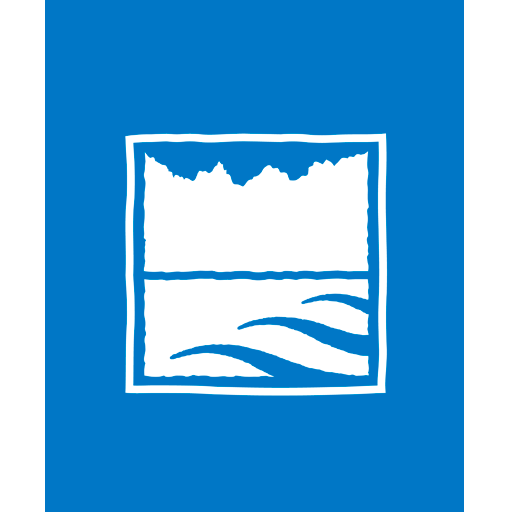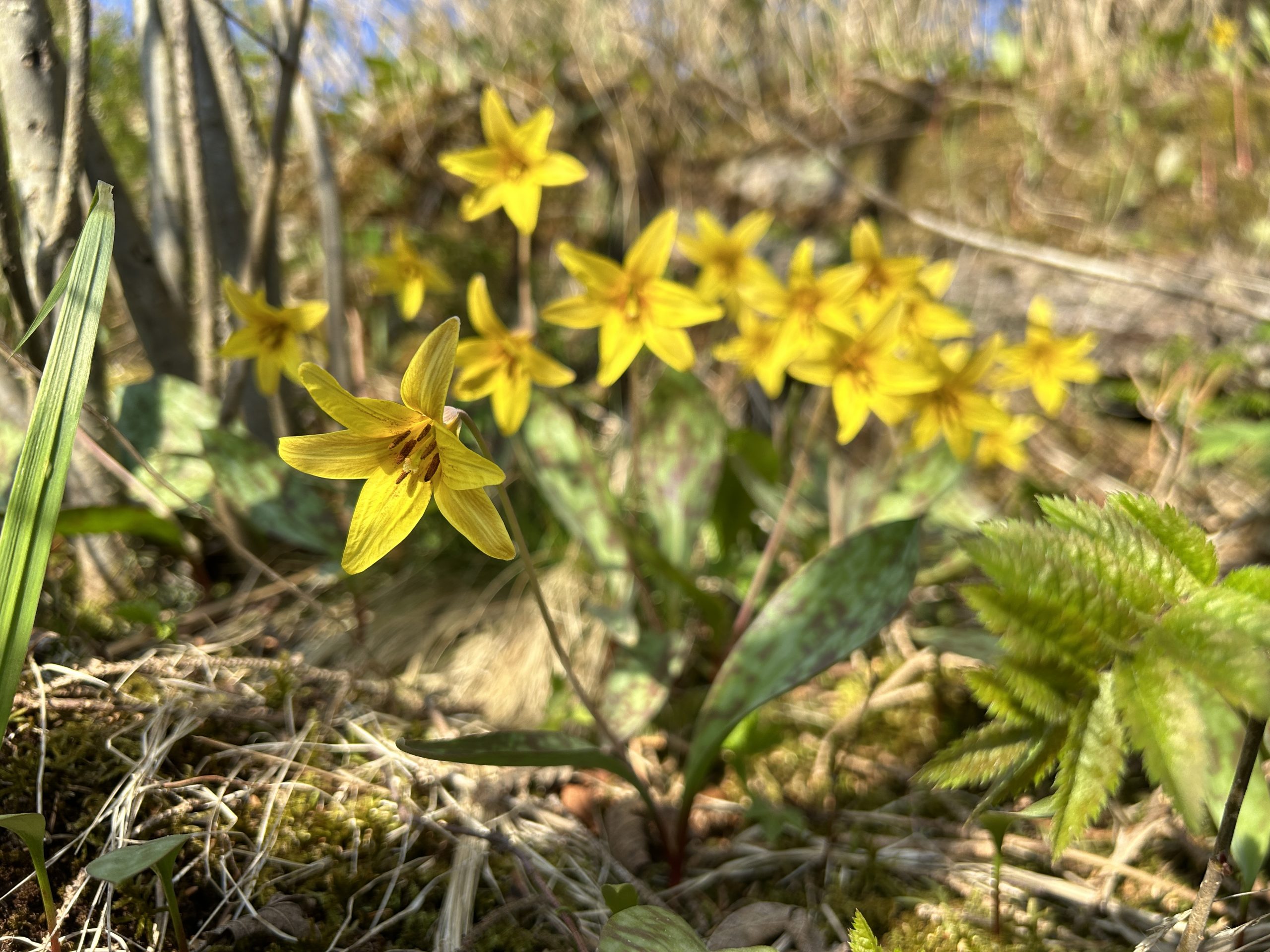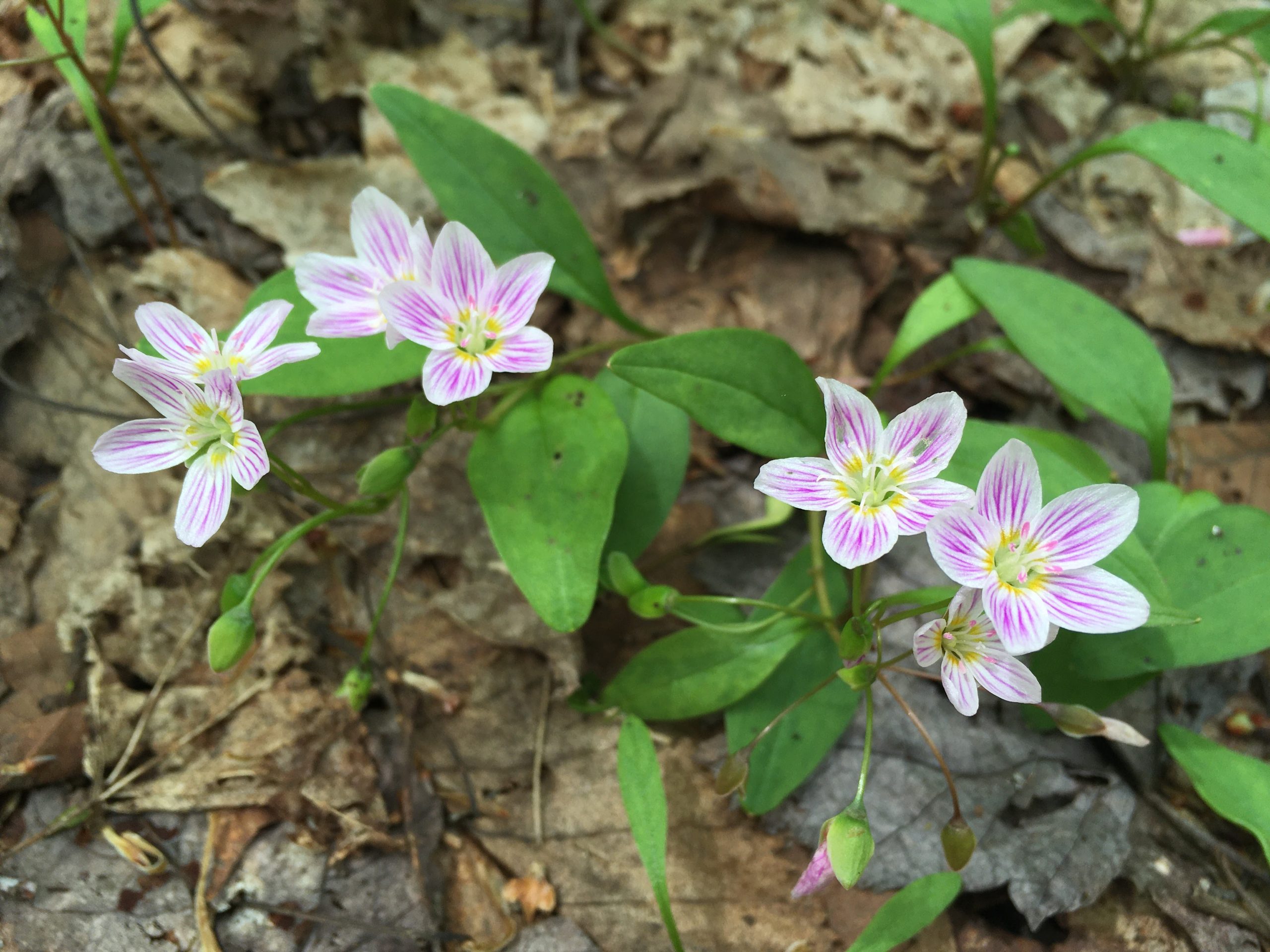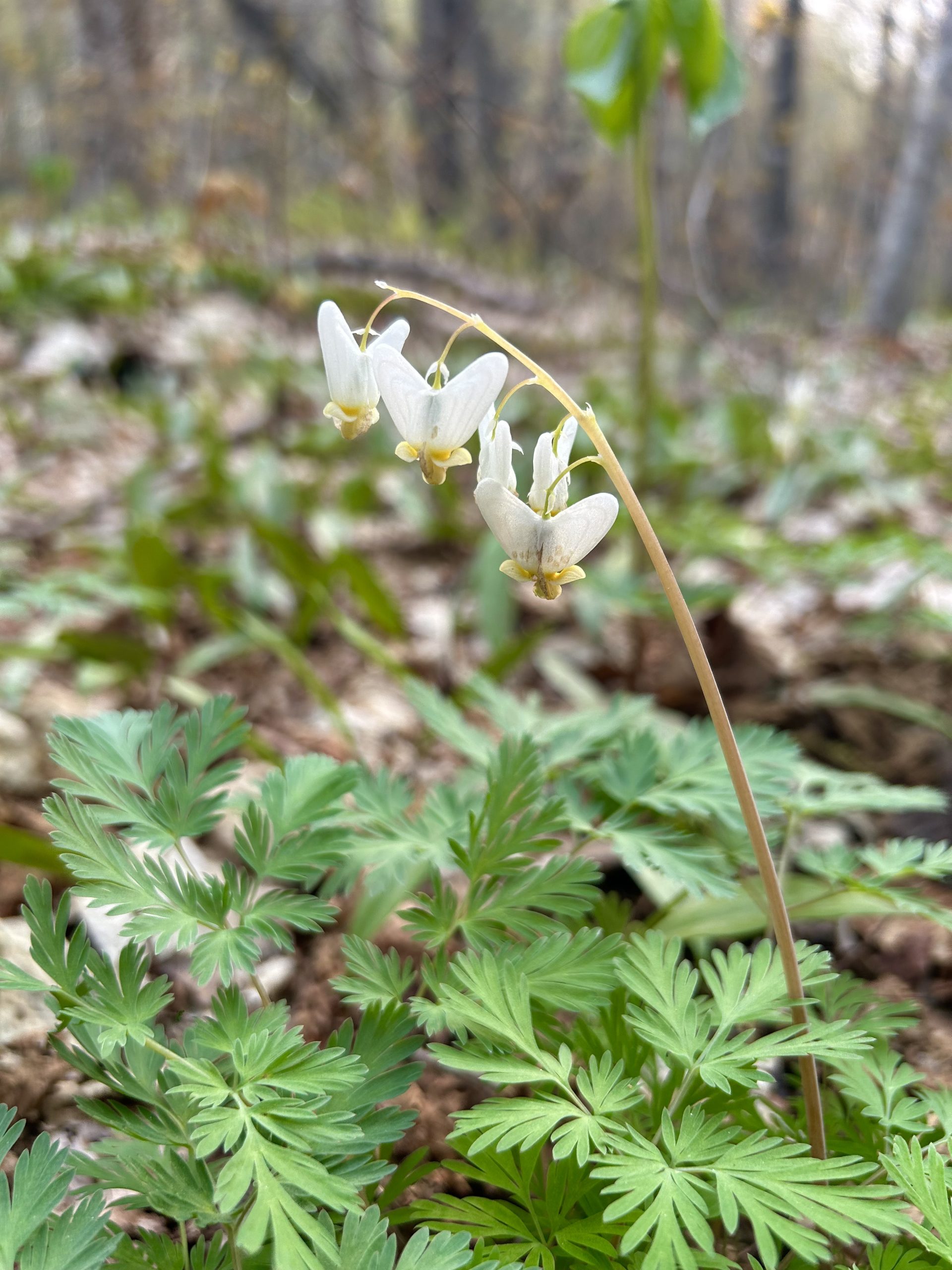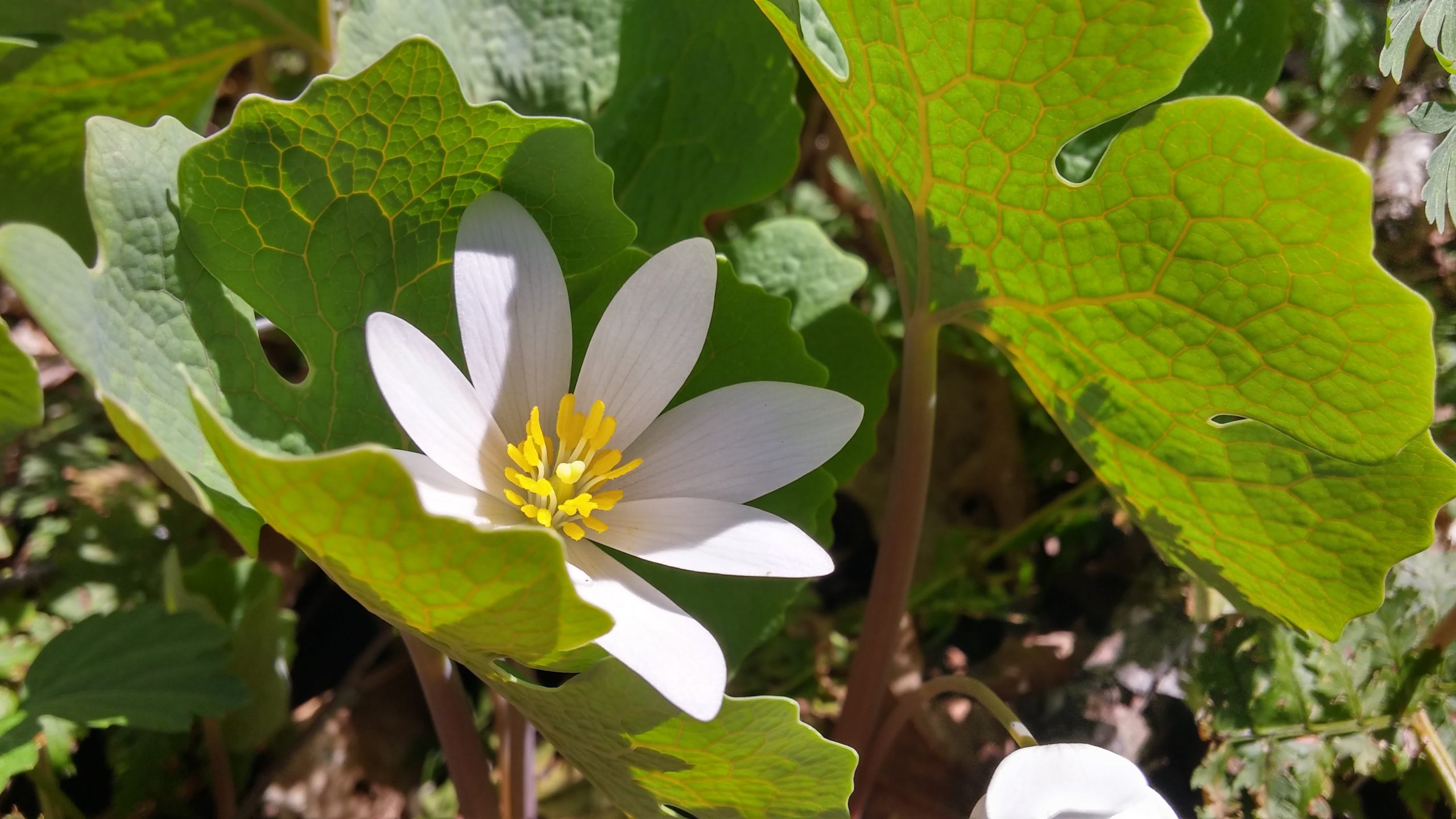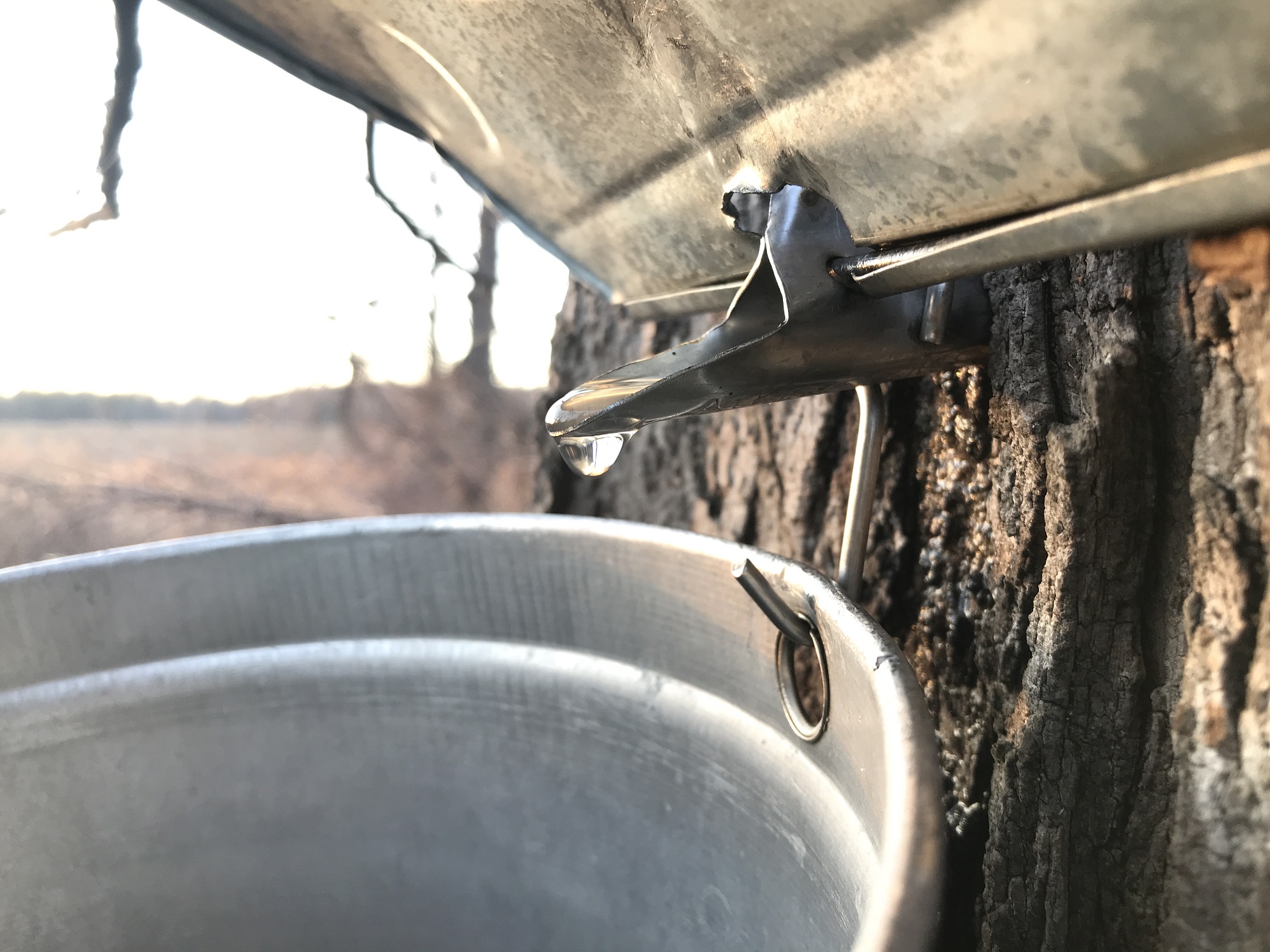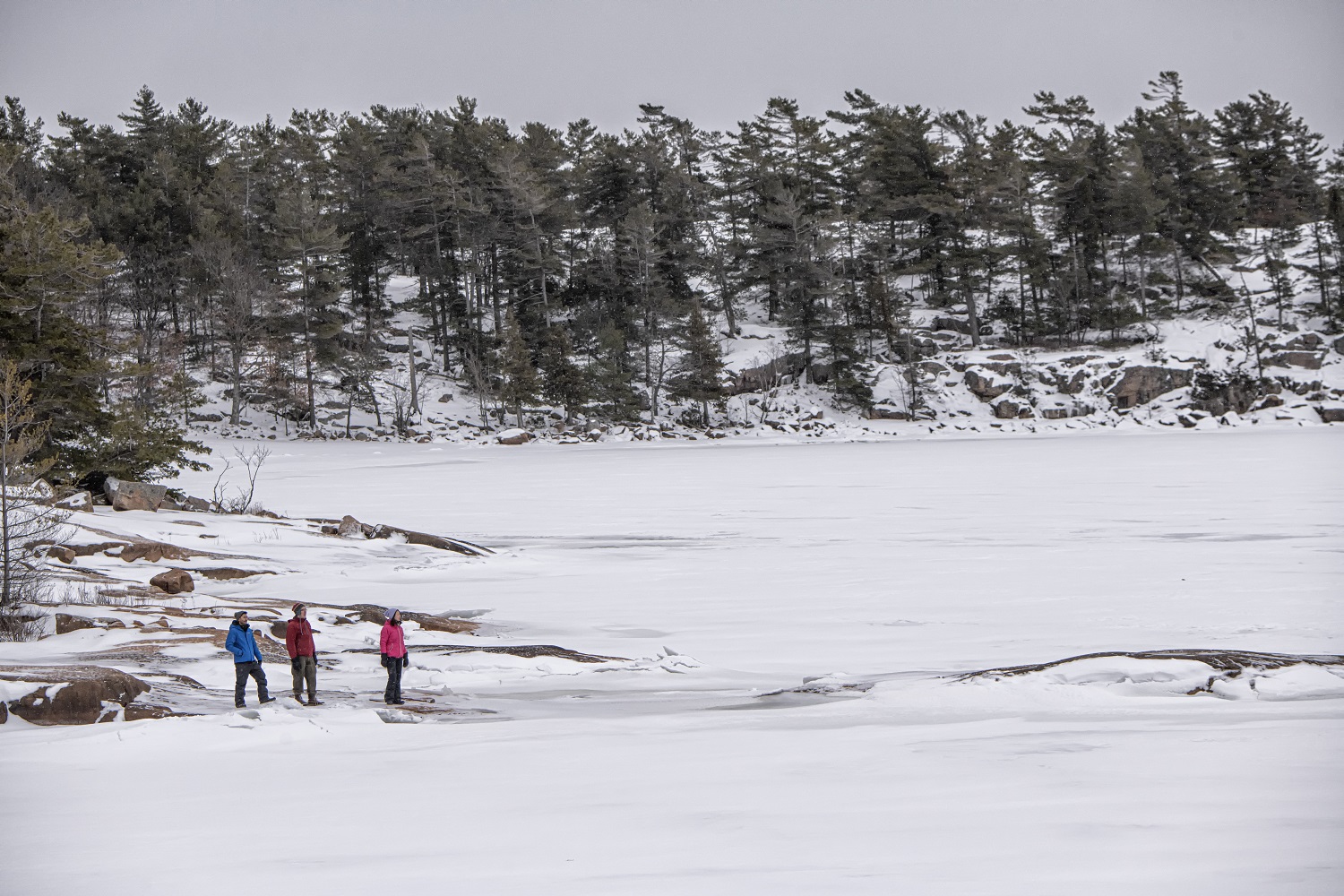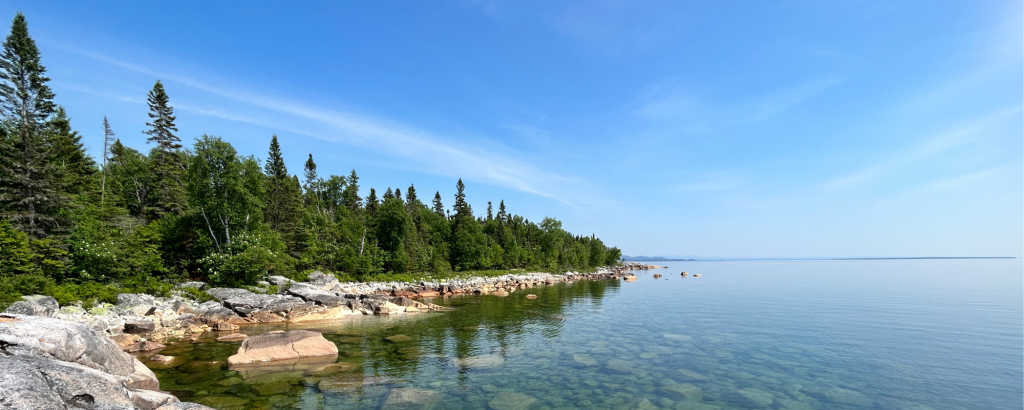
Lake Superior Provincial Park shines in summer and fall, but we think that spring is the most underrated time of the year to visit.
As the landscape awakens from its deep winter slumber, the park transforms into a wonderland of fresh green, rushing water, and vibrant life. Many of the wonders of the season can’t be experienced any other time of the year.
~
Wonderful waterfalls
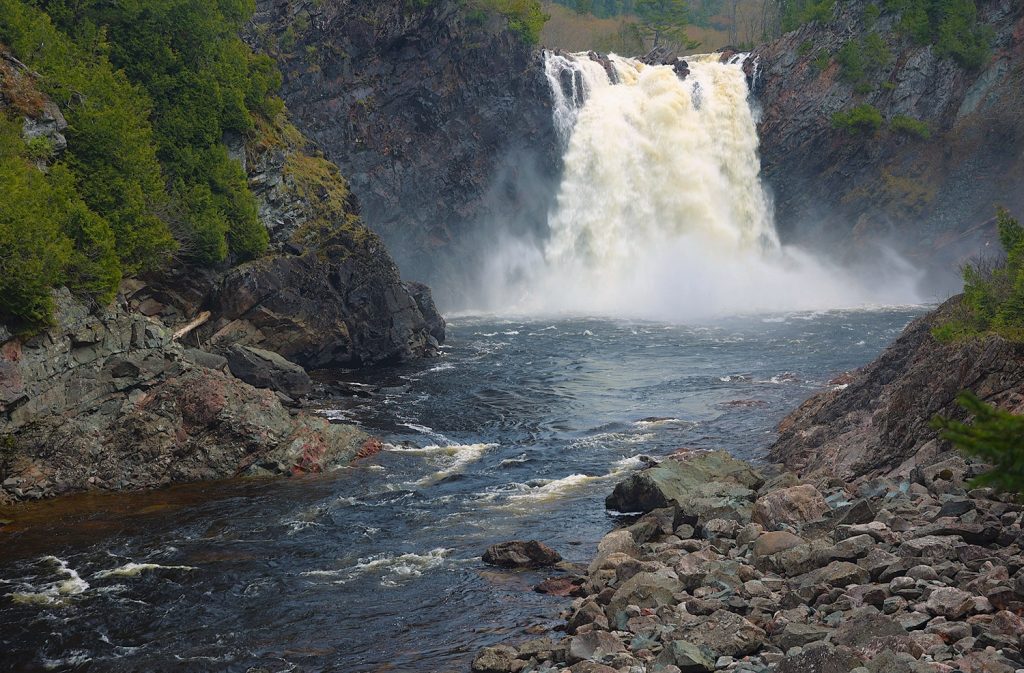
Springtime is prime waterfall season! After a winter of accumulating lake effect snow, the spring melt makes for an impressive water flow over the park’s many waterfalls.
May and June are the best months of the year to appreciate the sheer power of water as it cascades over the landscape’s rugged geology.
Whether you’re looking for a leisurely hike or a challenging one, Lake Superior has a waterfall trail for you:
~
Easy: Sand River Falls on Pinguisibi Trail
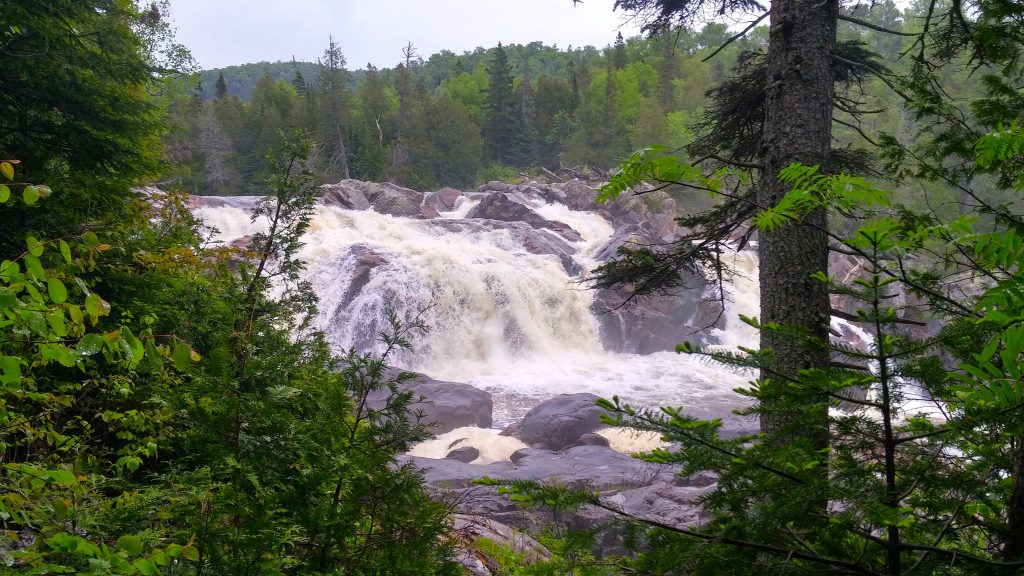
This 3 km linear (6 km return), family-friendly trail follows the Sand River with a stunning series of rapids and waterfalls. The rapids start at the trailhead and the largest waterfalls are only roughly 1.5 km up the trail. This makes Pinguisibi a great option for visitors who are looking for an easy hike or only have a short time to visit.
~
Moderate: Baldhead River Falls on Orphan Lake Trail
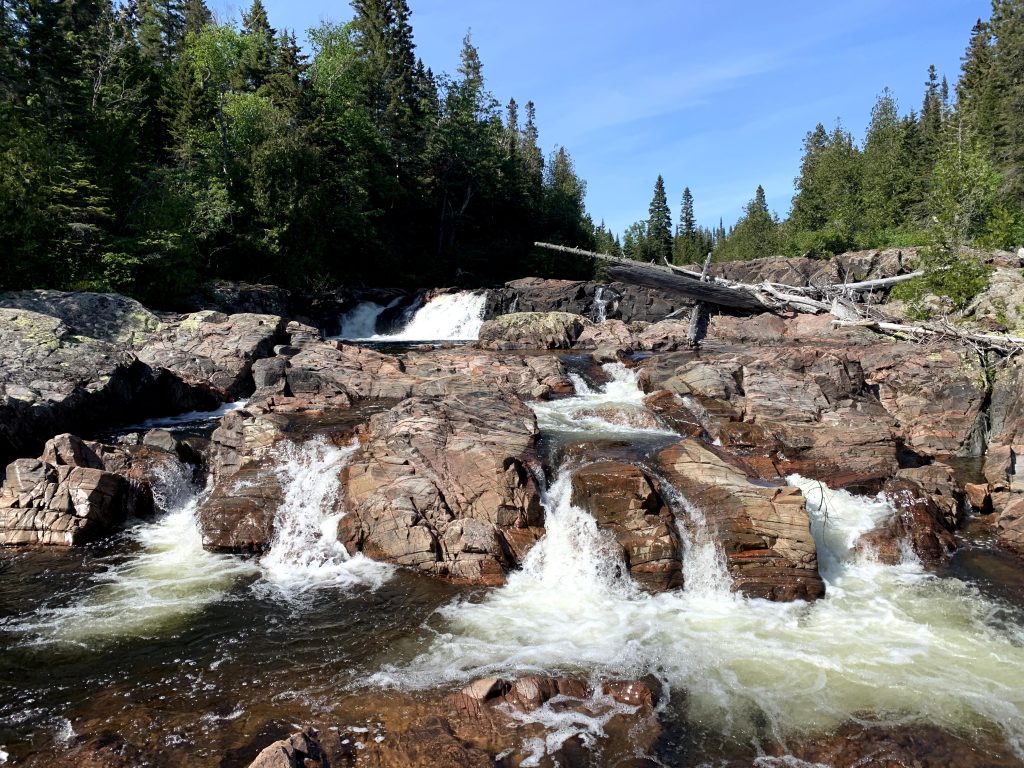
This 8 km loop is one of the park’s most diverse trails and features a beautiful, multi-tiered, branching waterfall that makes an excellent stop for a picnic lunch.
~
Challenging: Agawa Falls on Towab Trail
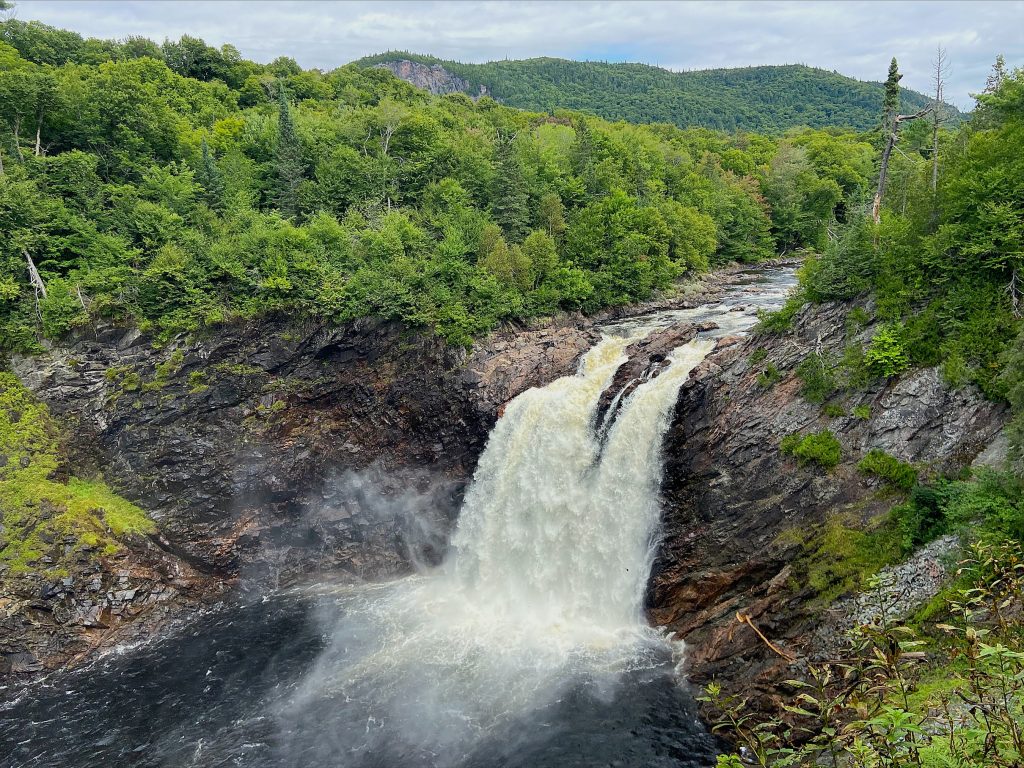
Recommended as an overnight trip, this very demanding, 12 km linear (24 km return) trail follows the footsteps of legendary Ojibwe guide Towabanasay along the Agawa River. Be rewarded with breathtaking views of the park’s tallest waterfall, 25-metres high. Reservable backcountry campsites are available along the trail.
~
Terrific trout fishing
With a world-class trout fishery and many beautiful inland lakes and rivers, spring is the best time for anglers to explore Lake Superior Provincial Park.
Rainbow Trout can be found running through the park’s rivers in early May. Agawa River, just north of the Agawa Bay Campground, is a great place to cast a line for these beautiful fish.
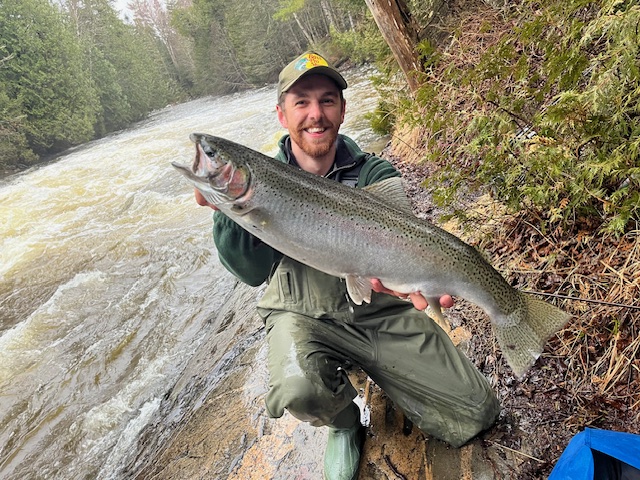
Brook Trout, Lake Trout, and Splake are also abundant in the park. These cold-loving fish can be found in more shallow waters in the springtime than in the summer.
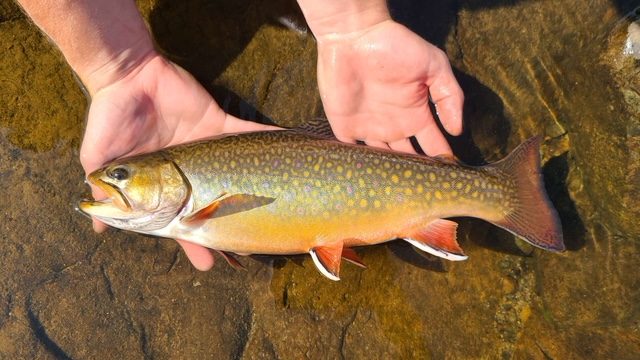
Gargantua Road opens the door to several productive trout lakes, offering anglers the perfect blend of accessibility and seclusion, including:
- Belanger Lake Canoe Route, a great option for a peaceful, overnight fishing trip with short portages and private backcountry campsites
- Gargantua Lake, Miron Lake, and Buckshot Lake, which have each been recently outfitted with a park rental canoe at the end of their single portages. Perfect for anglers not keen on portaging but looking for solitude
You can explore the many trout lakes throughout the park with Fish ON-line, a helpful resource for discovering which species are found where.
Three important reminders for anglers:
- Be mindful that the park has a live baitfish ban in place to protect the health of the park’s fisheries
- Spring paddling is not without its risks due to cold water. Be sure to keep safety front of mind when on the water
- Always check the Ontario Fishing Regulations before casting your line
Wildflowers
Beautiful blossoms can be admired throughout all of Lake Superior’s operating season, but spring is unrivaled when it comes to wildflowers.
So much so that the Ojibwe refer to May as Waabigwan-Giizis, Anishinaabemowin for “Flower Moon.”
While trees are budding in mid-to-late May, a group of plants called spring ephemerals rush to take advantage of the full sun, completing their life cycles before the forest canopy closes in on them.
For a few weeks, the understories of the park’s deciduous forests are carpeted with these delicate beauties.
The first 5 km of the linear Towab Trail is an easy hike and a favourite place of our staff to marvel at this fleeting yet spectacular show.
Other great loop trails for spring ephemerals include Crescent Lake (4.5 km; easy), Orphan Lake (8 km; moderate), and Awausee (10 km; demanding).
By June, Ode’Mini-Giizis or “Strawberry Moon,” the park’s trails are lined with another flush of showy flowers and the air smells gloriously sweet.
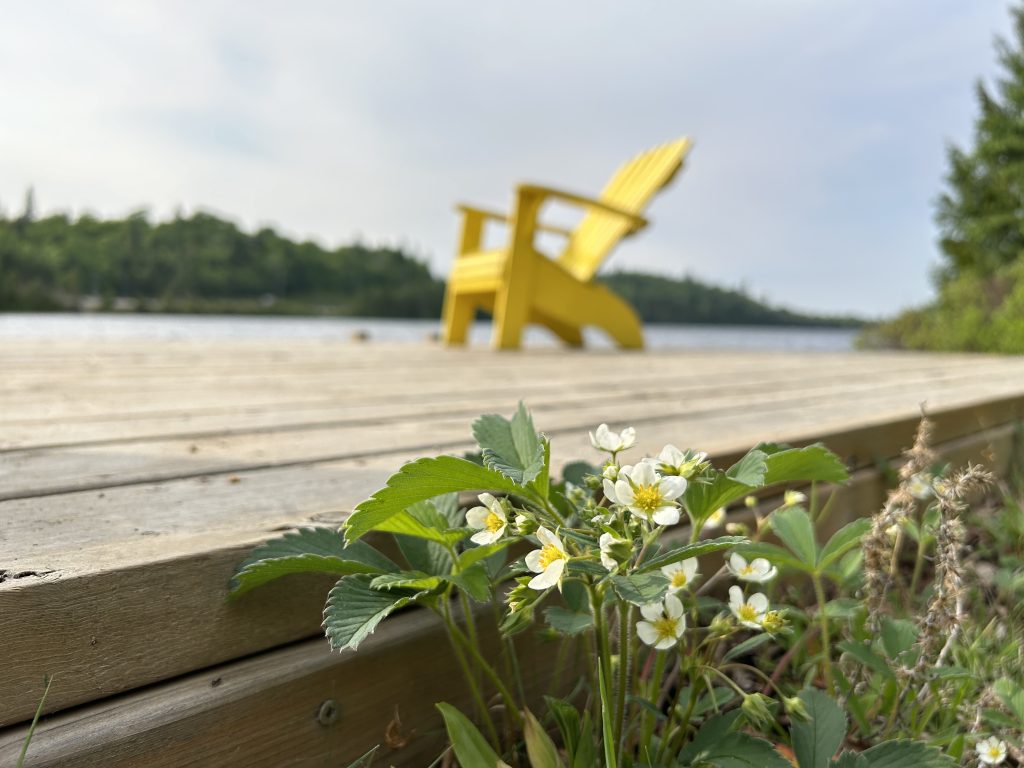
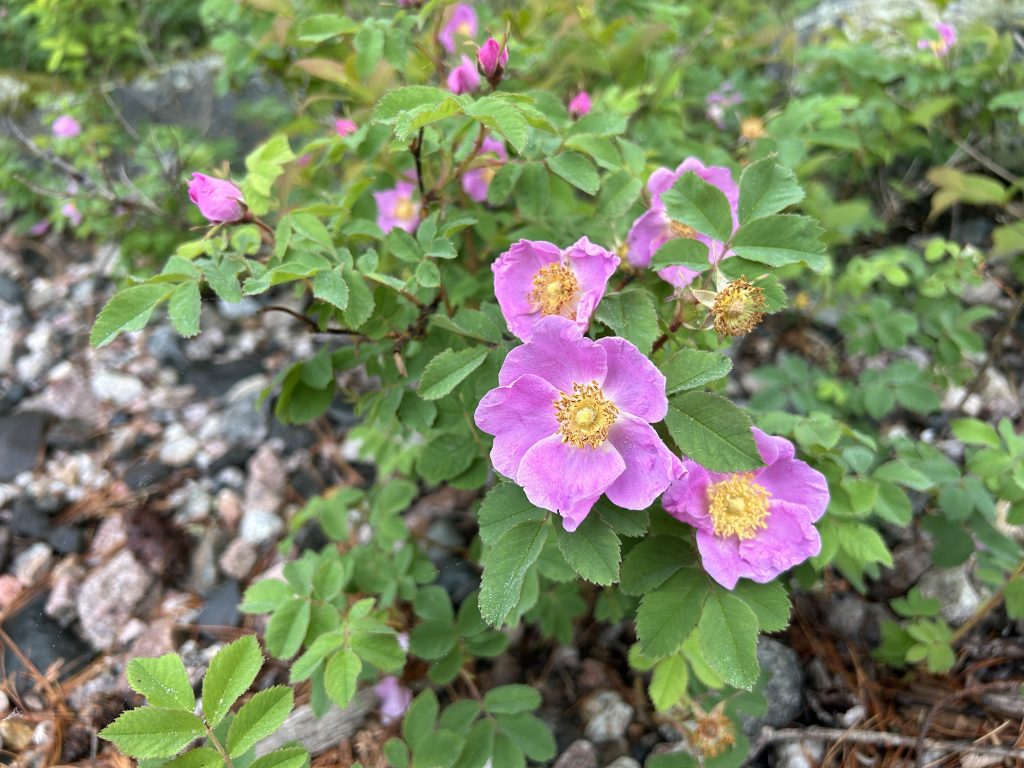
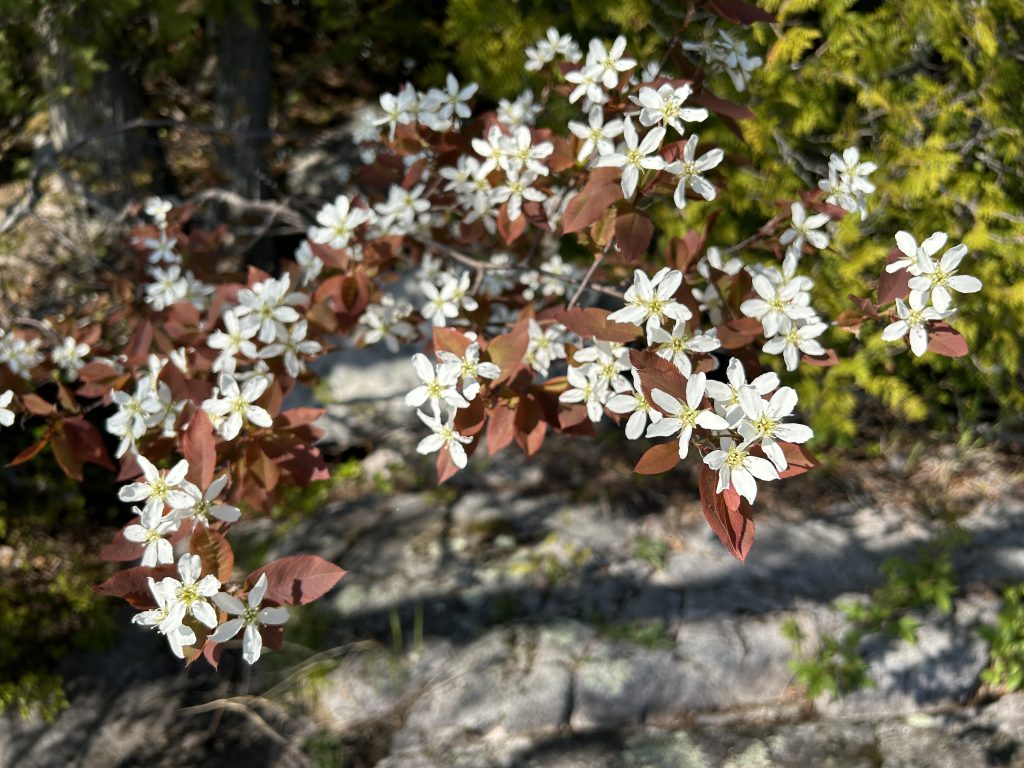
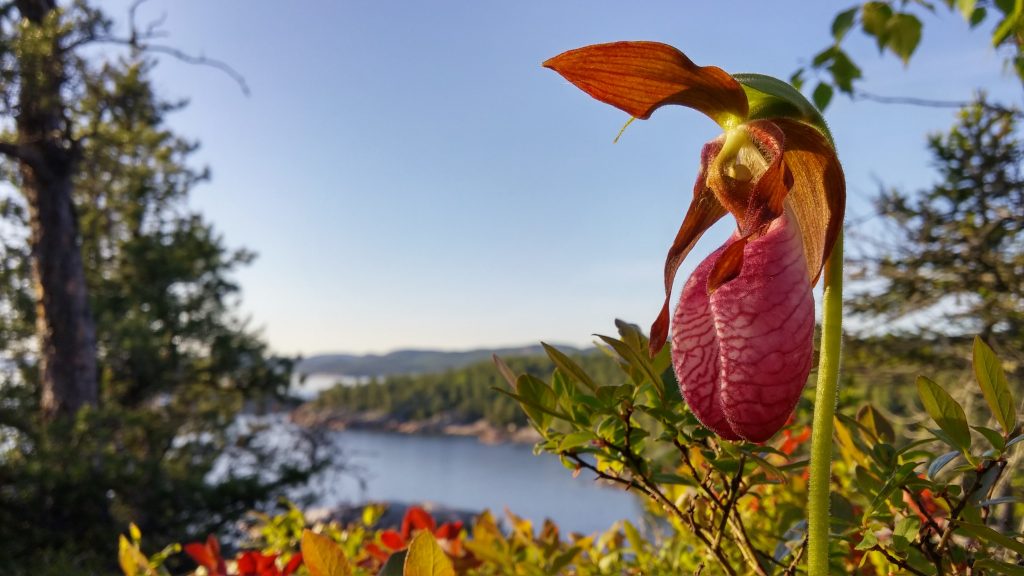
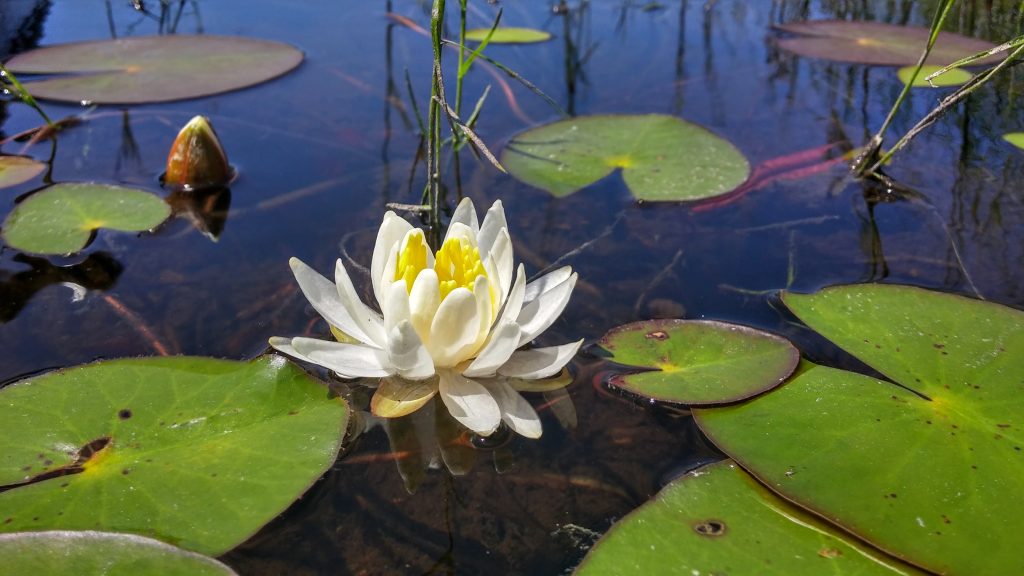
To learn more about the park’s wildflowers, download iNaturalist, a community science app, and explore the Lake Superior Provincial Park Project. You can also chat with a Park Naturalist at the Visitor Centre Information Desk to discover more about what’s currently in bloom!
A friendly reminder: While we understand the temptation, it is unlawful to pick flowers in our provincial parks. Please take nothing but pictures and leave the blooms behind for the pollinators and for other visitors to admire.
~
Birding bonanza
Lake Superior Provincial Park is massive and protects diverse habitats, including the transition between Great Lakes-St. Lawrence and the boreal forests.
This means that the park is a great place to find a huge diversity of birds, including species at both the northern and southern limits of their ranges. As spring is breeding season, you can expect a symphony of birdsong and stunning breeding plumage this time of year.
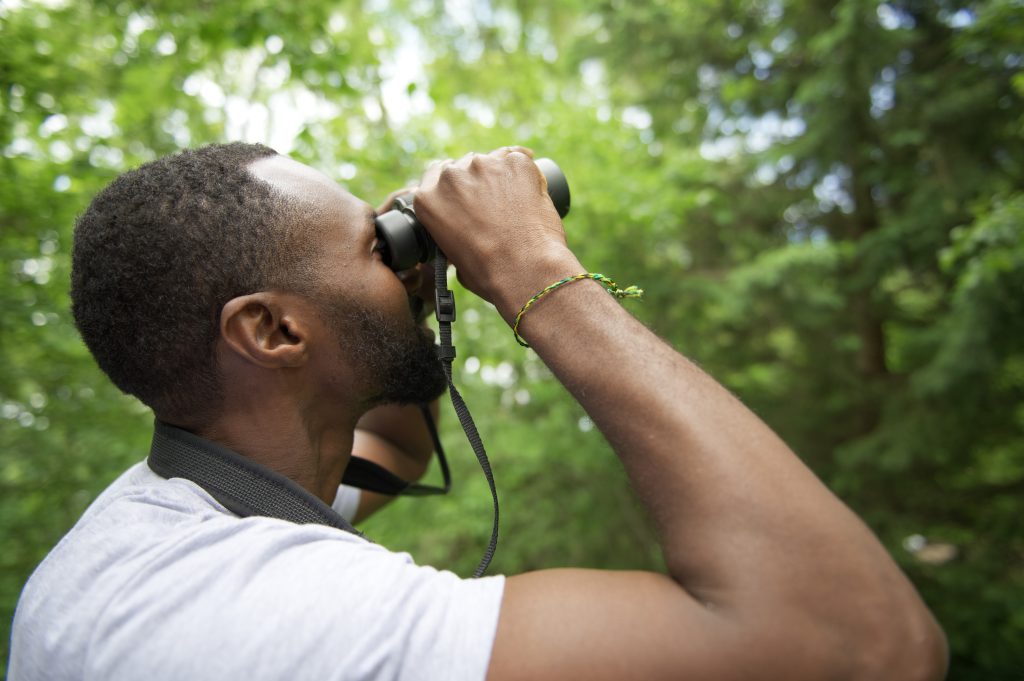
The lack of foliage in early spring makes it easier to spot birds compared to the summer and their loud songs make them easier to hear.
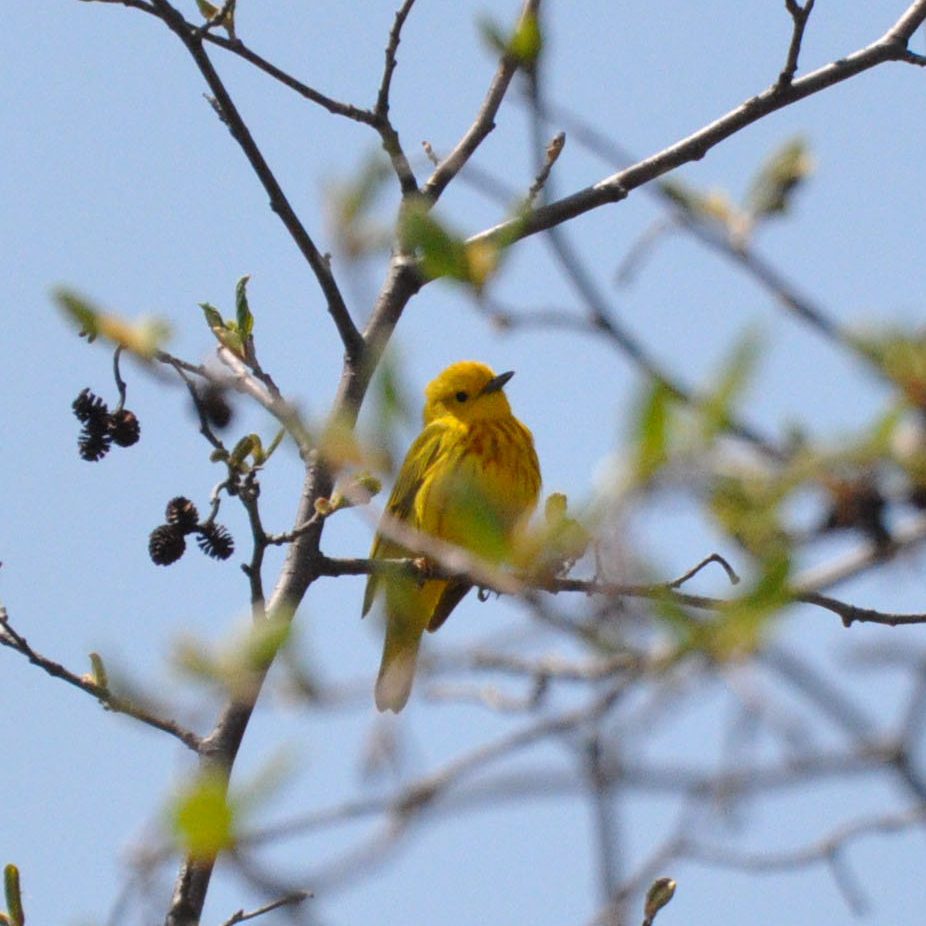
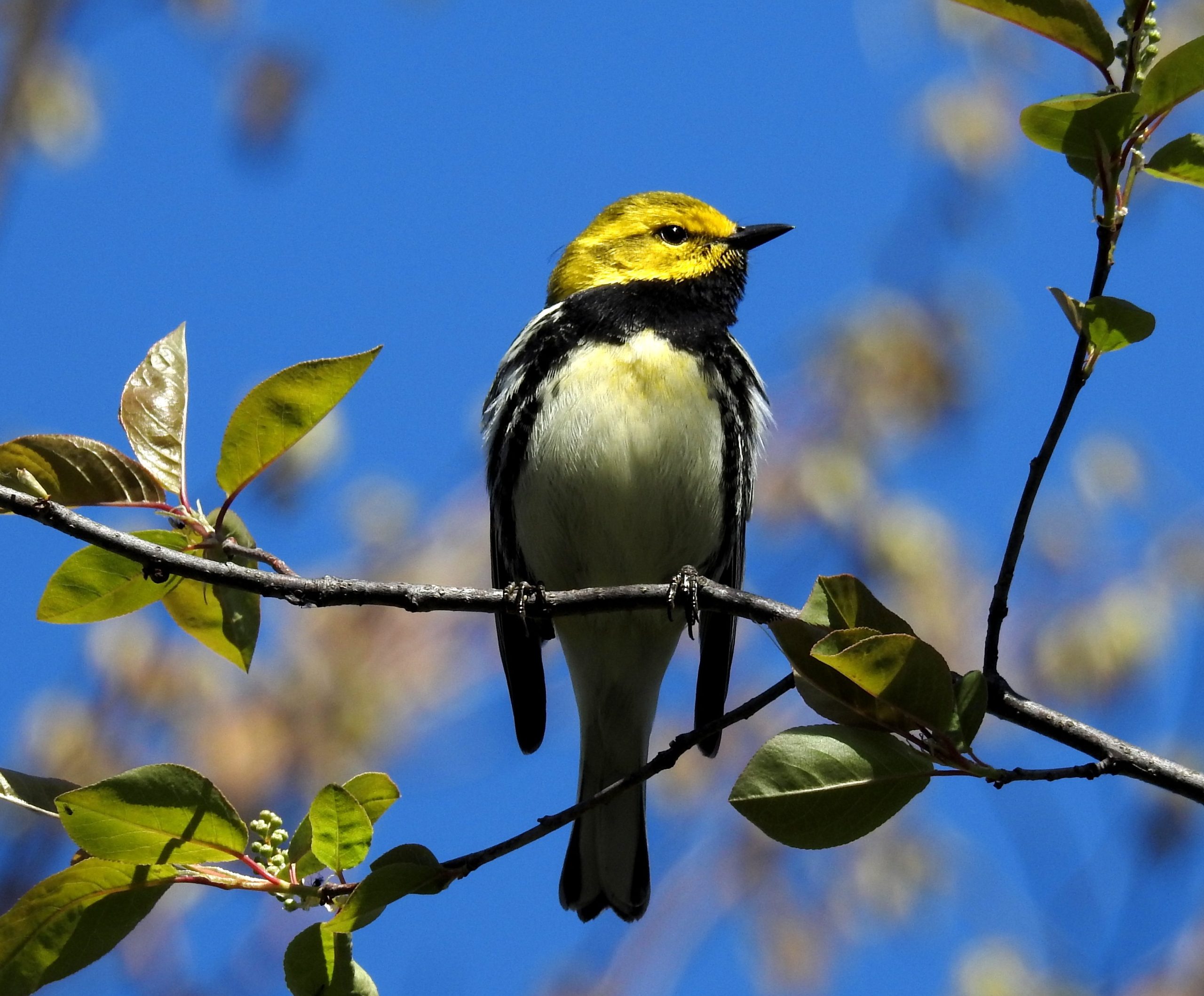
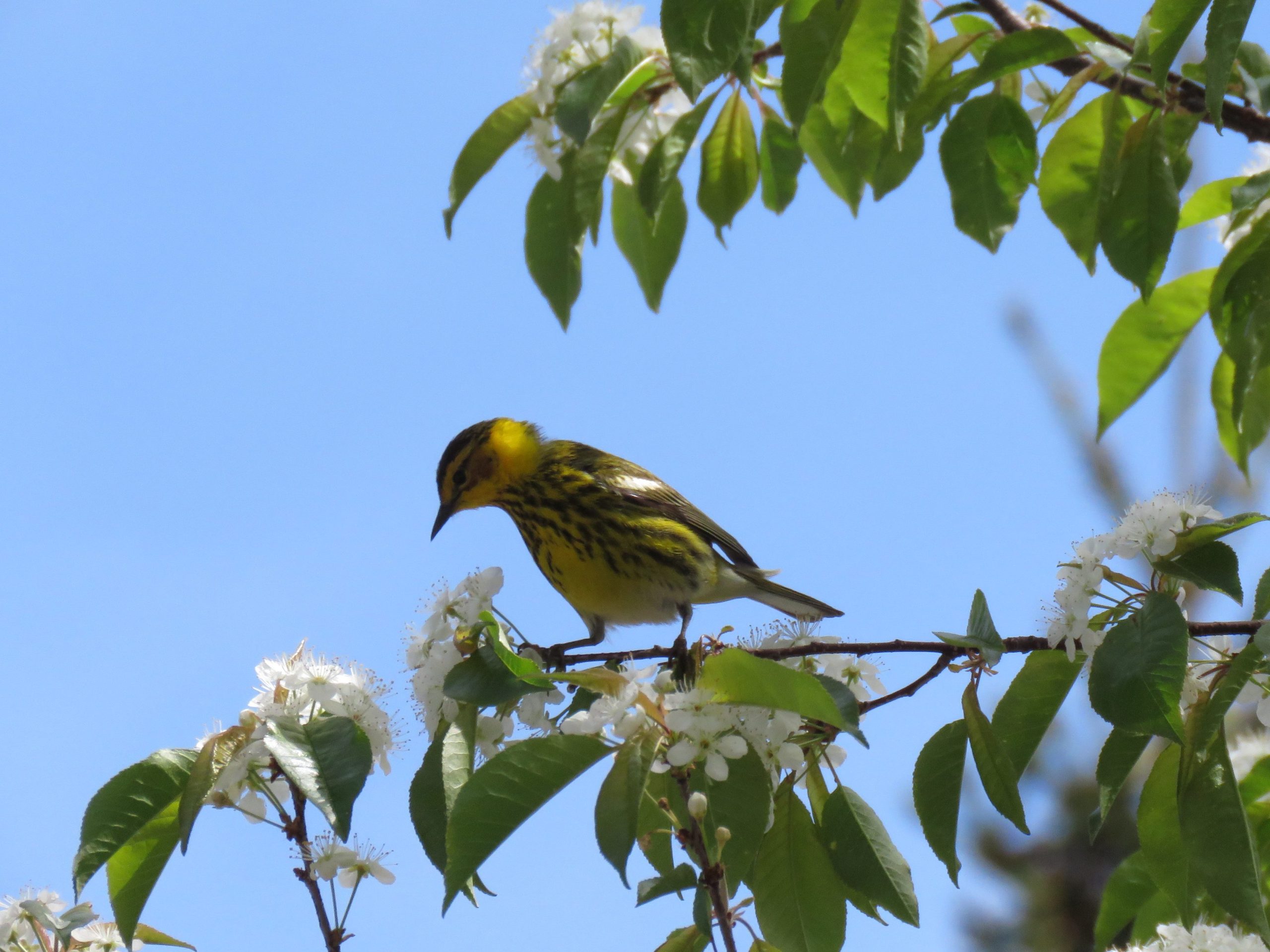
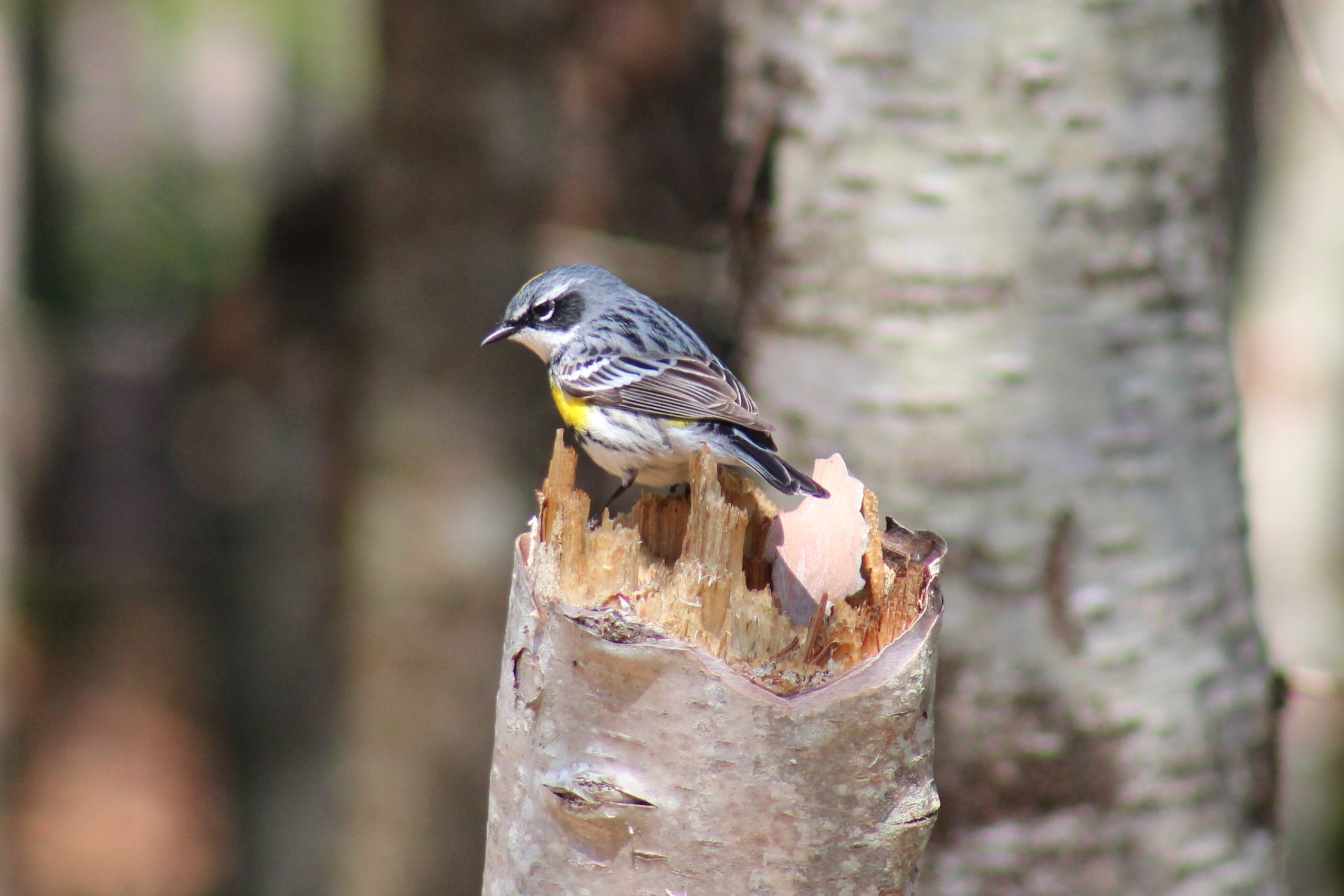
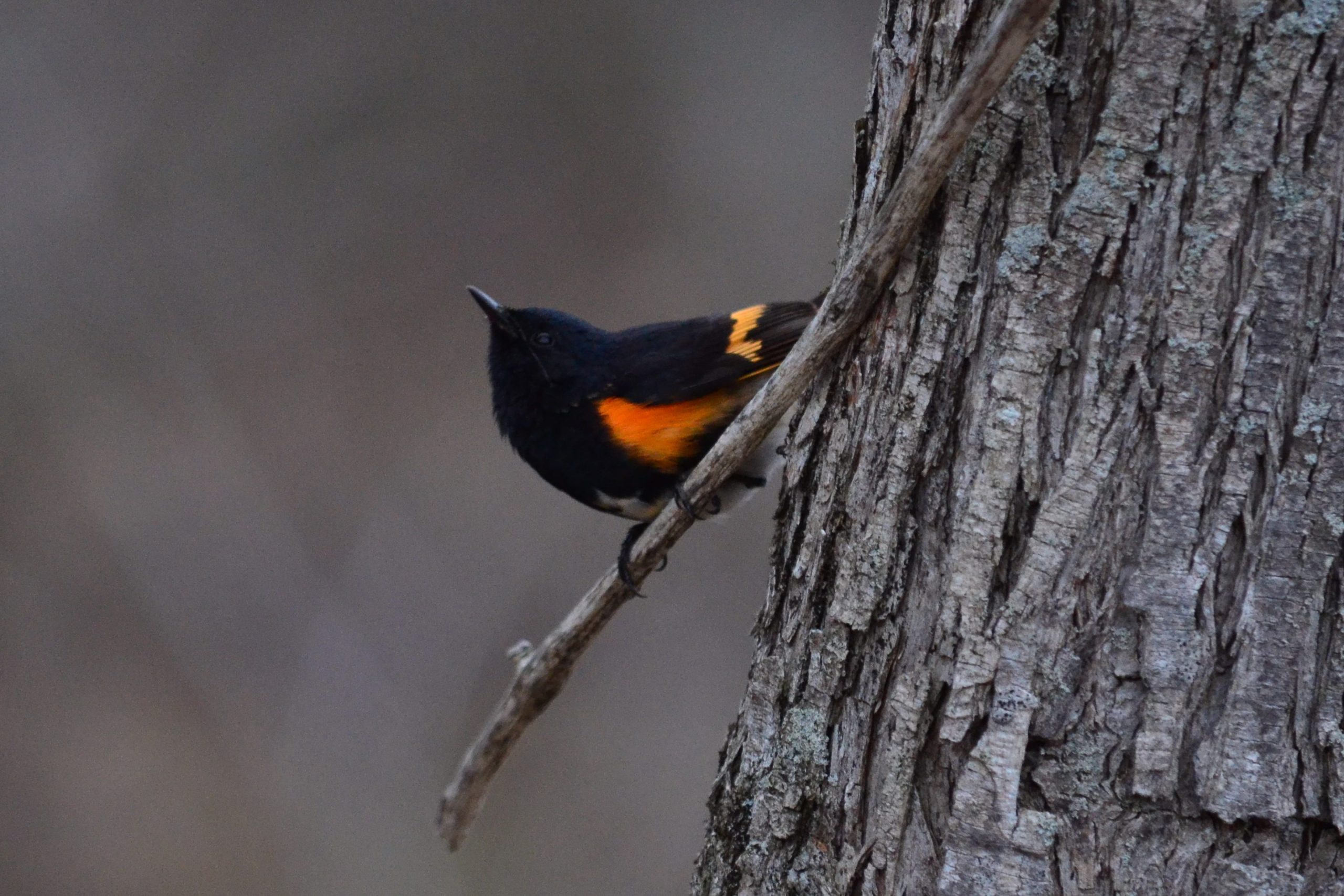
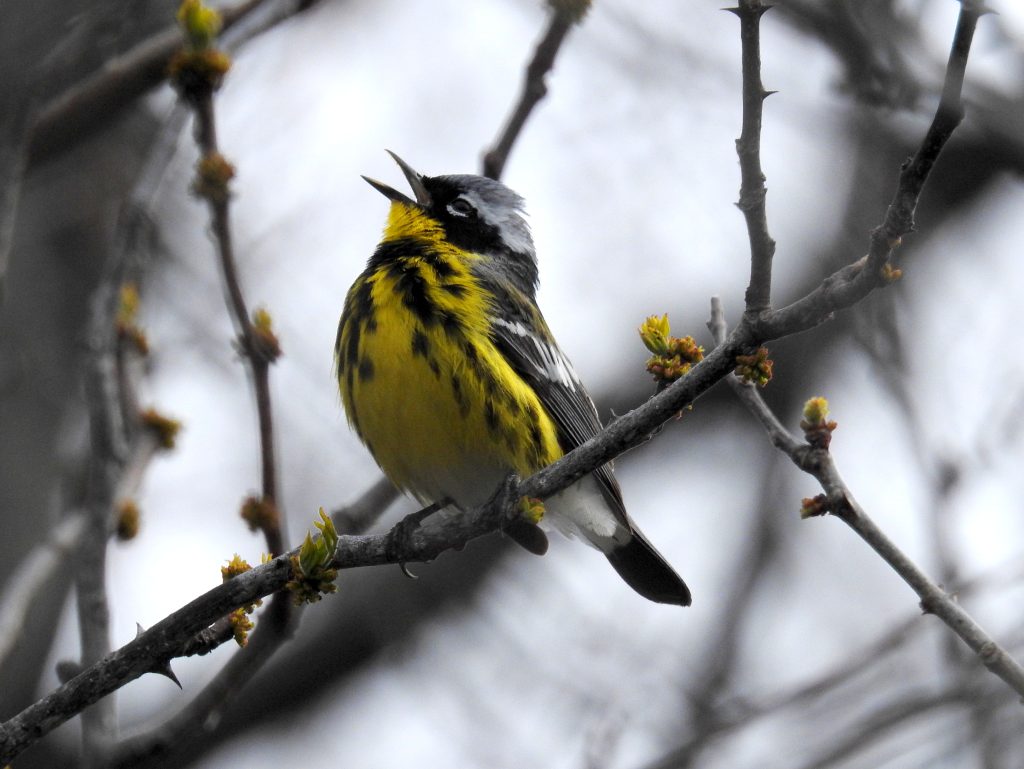
These are a few of our naturalists’ favourite places to bring their binoculars in springtime:
~
Coastal Trail by the Visitor Centre at Agawa Bay
This section of the rugged Coastal Trail was once a road, making for a leisurely walk where you can focus on the birds and not your feet.
With Agawa Bay beach to one side and lush forest on the other, you’ll find a variety of bird families here–everything from shorebirds, to raptors, to warblers.
Drop by the Visitor Centre to chat with a Park Naturalist and borrow a birding kit with a pair of binoculars if you don’t own a pair! An All-terrain wheelchair is also available for free to take down the trail, making this the most accessible birding location in the park.
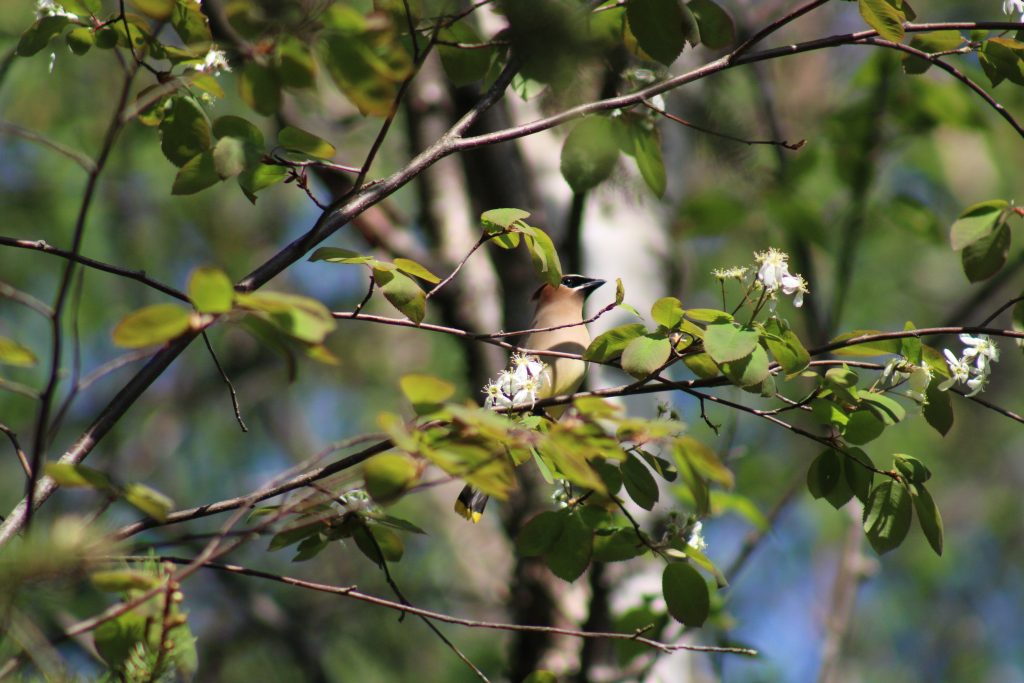
~
Trapper’s Trail
This easy 1.5 km loop circles Rustle Lake, a gorgeous wetland. Here, you’ll again find a variety of species, including waterfowl. This trail has two wildlife viewing platforms and a floating boardwalk to soak it all in.
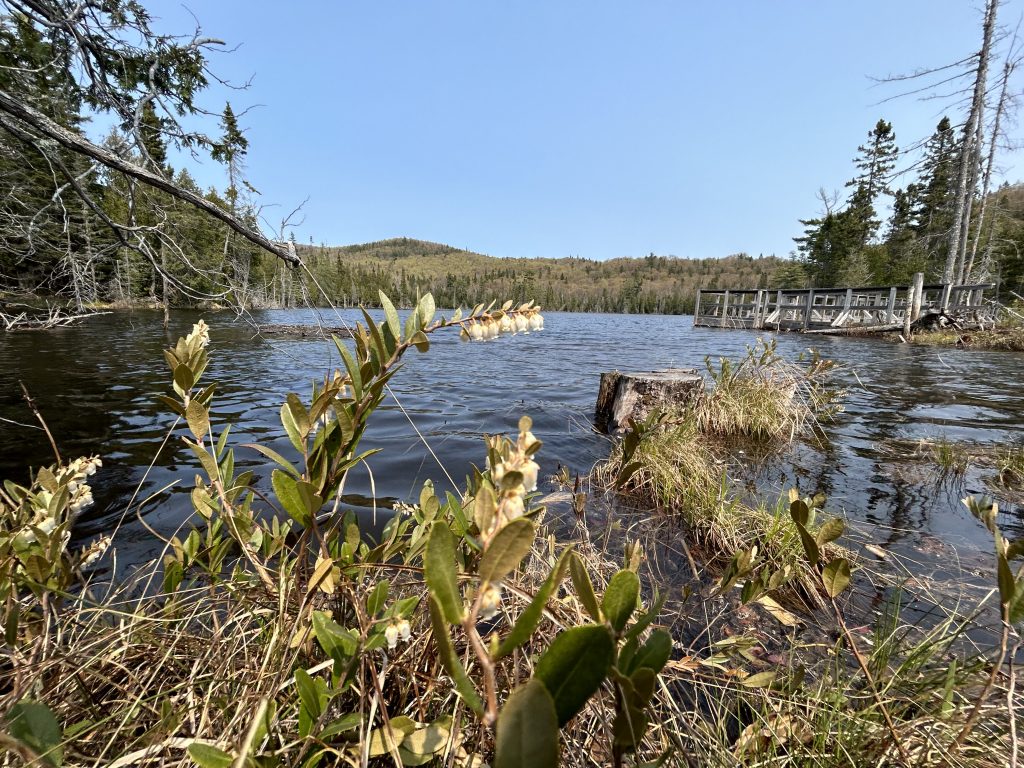
~
Nokomis Trail
This moderately demanding 5 km loop through the park’s old growth Boreal Forest is a great place to watch warblers, including the stunning Northern Parula.
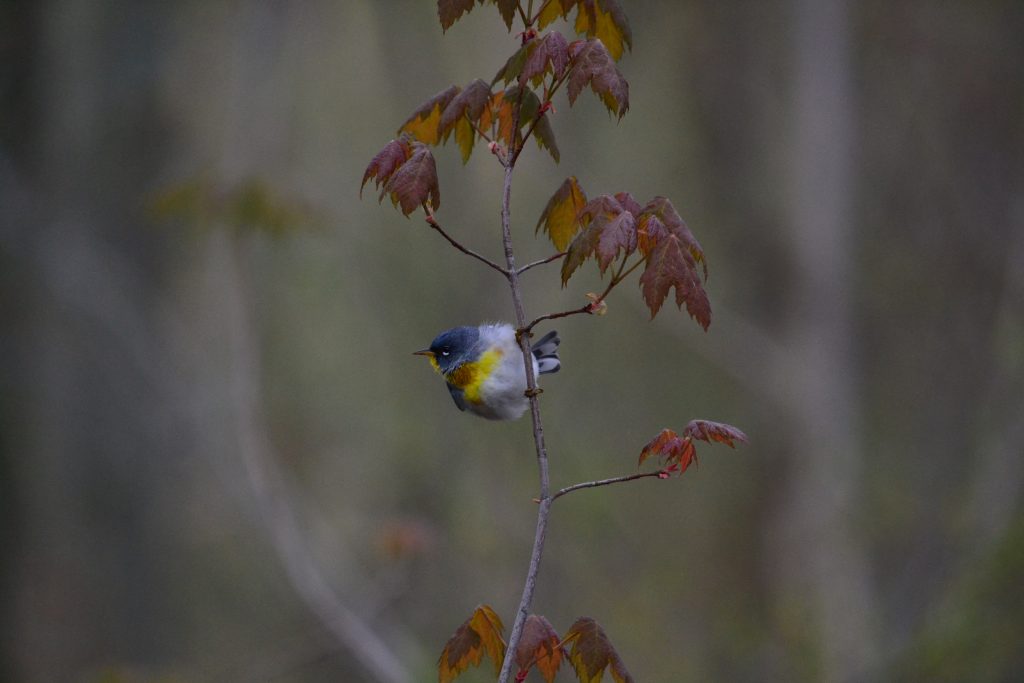
This species nests in the Old Man’s Beard lichen that is especially abundant in the park’s lush coastal forests.
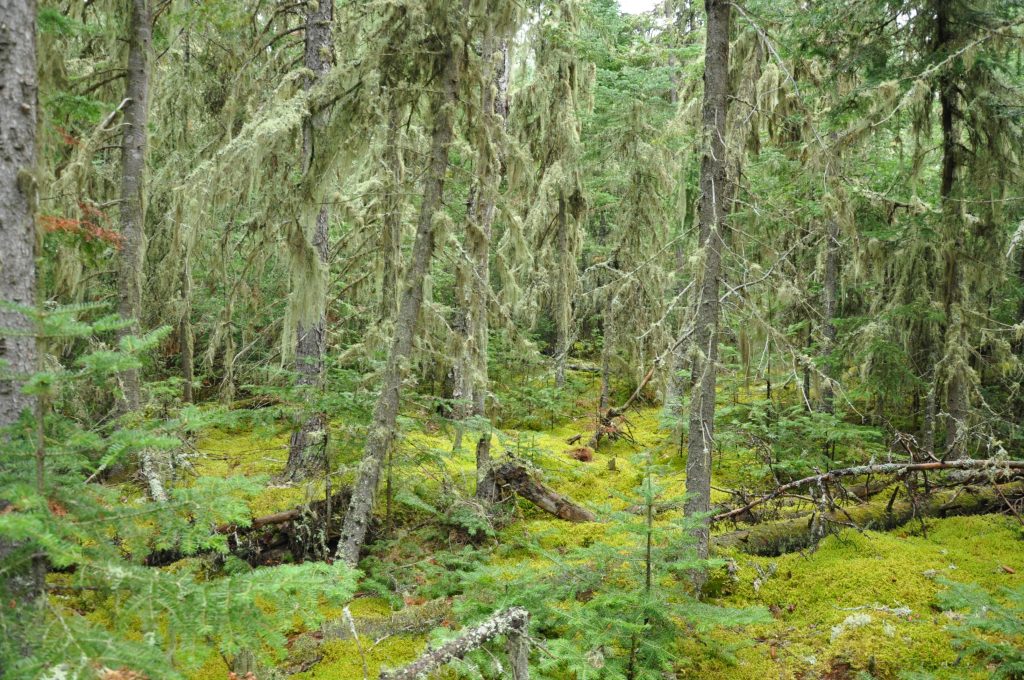
~
Peace and quiet
Apart from the sounds of crashing waves, cascading waterfalls, and exuberant birdsong, springtime is gloriously peaceful at Lake Superior.
In May and June, you can find ample parking throughout the park and no crowds, even on weekends.
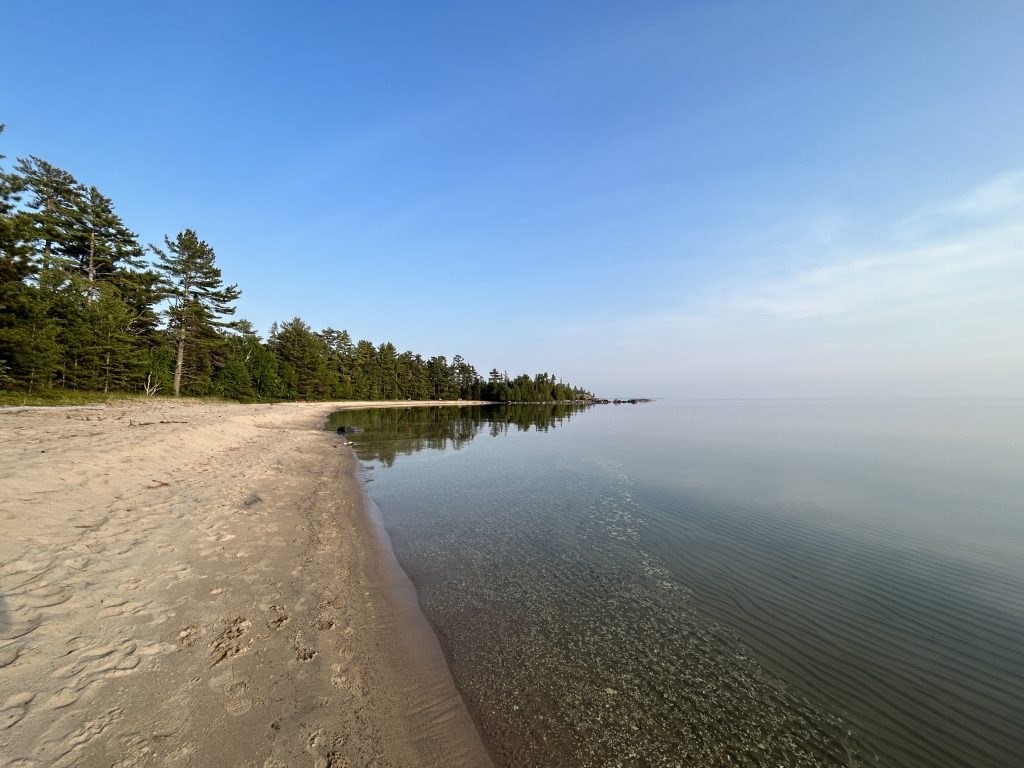
While reserving ahead of time is recommended for camping in peak season, spur-of-the-moment trips are possible in the springtime. Your odds of snagging that coveted beach-front site or a large electrical lot are good this time of year!
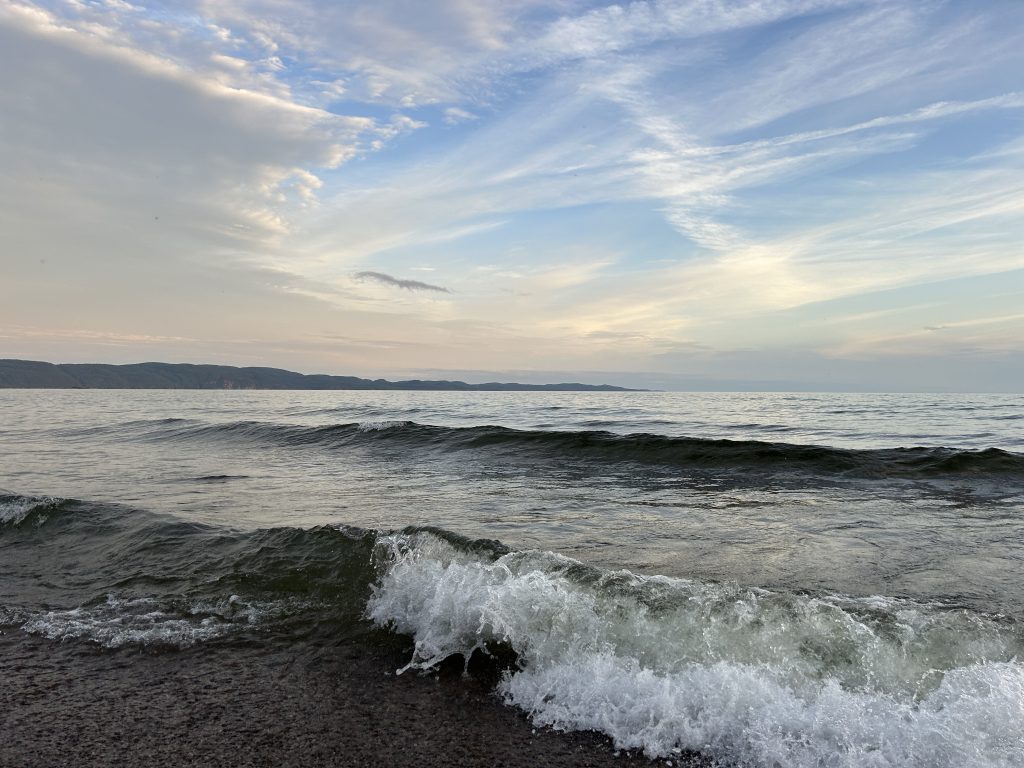
~
Okay, but what about the bugs?
Now we know what you’re thinking–that all sounds amazing but isn’t spring peak blackfly season? We won’t lie to you, there will be bugs, but with a little preparation they don’t need to be a buzzkill.
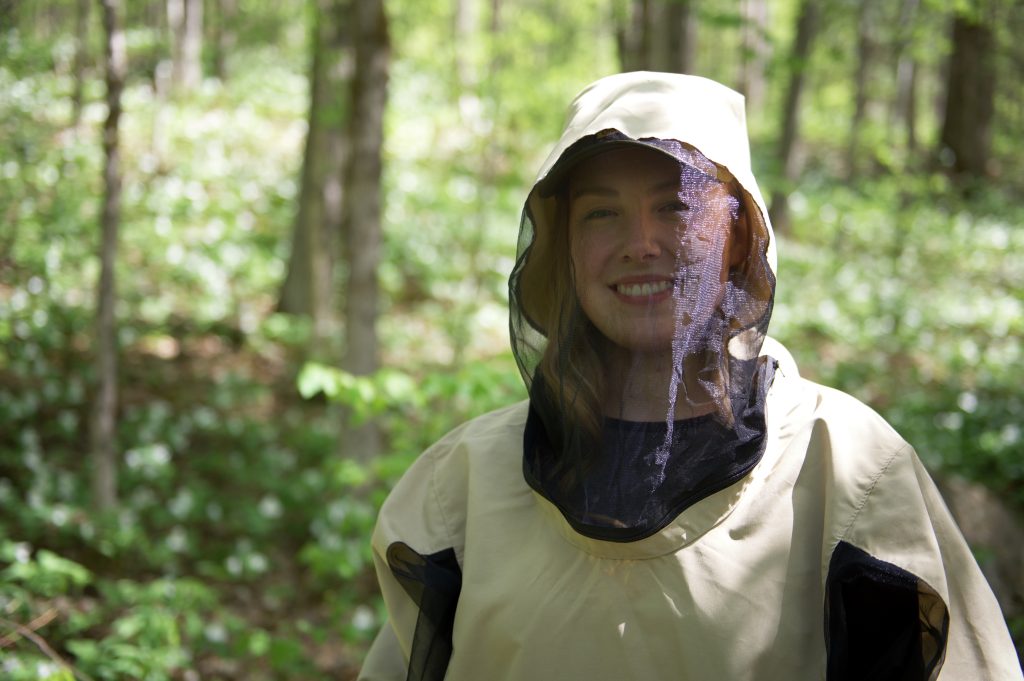
How to brave the blackflies:
- Pack bug spray
- Wear light-coloured clothing to be less attractive to blackflies and mosquitoes
- Cover up with long sleeves and long pants, ideally with cuffs which will prevent insects from crawling underneath. Choose lightweight fabrics for warmer weather.
- Consider investing in a bug jacket or bug hat
- Avoid wearing sweet-smelling scented products
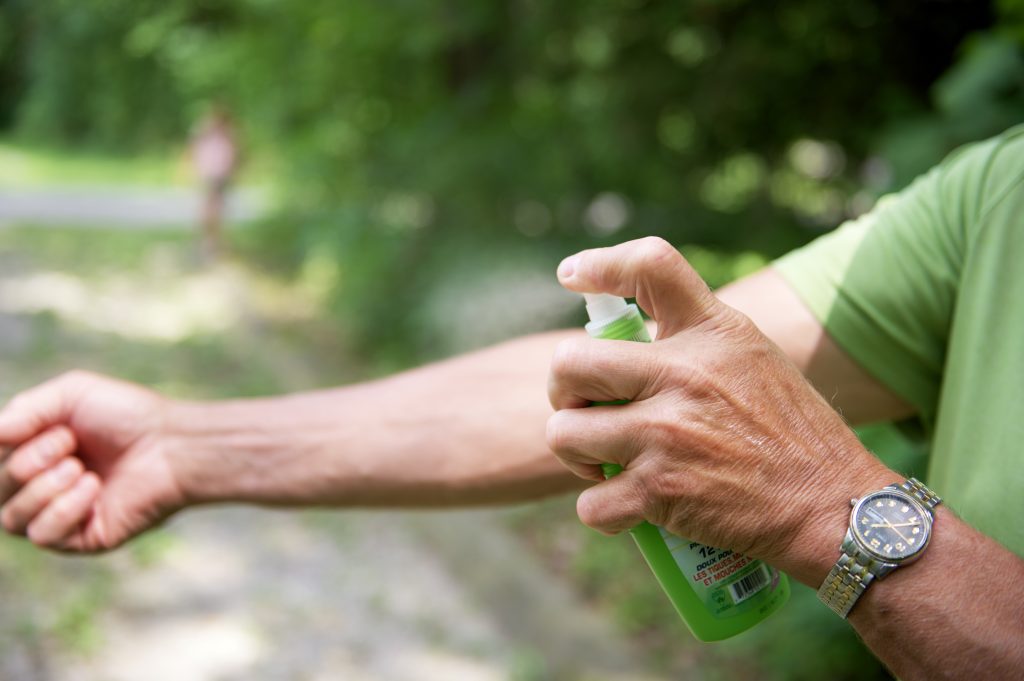
While blackflies can be a nuisance, they are more than just a part of the spring camping experience. They are essential to the magic of the season.
Blackfly larvae are a significant source of food for trout. Adult blackflies feed birds and pollinate wildflowers.
Embrace them as a part of the adventure and enjoy the beauty of spring!
~
Ready to plan your spring adventure?
Reservations can be made up to five months in advance for both the park’s campground and backcountry camping.
Remember that spring in Northern Ontario can look quite different than elsewhere in the province so be prepared for the possibility of some lingering snow and ice.
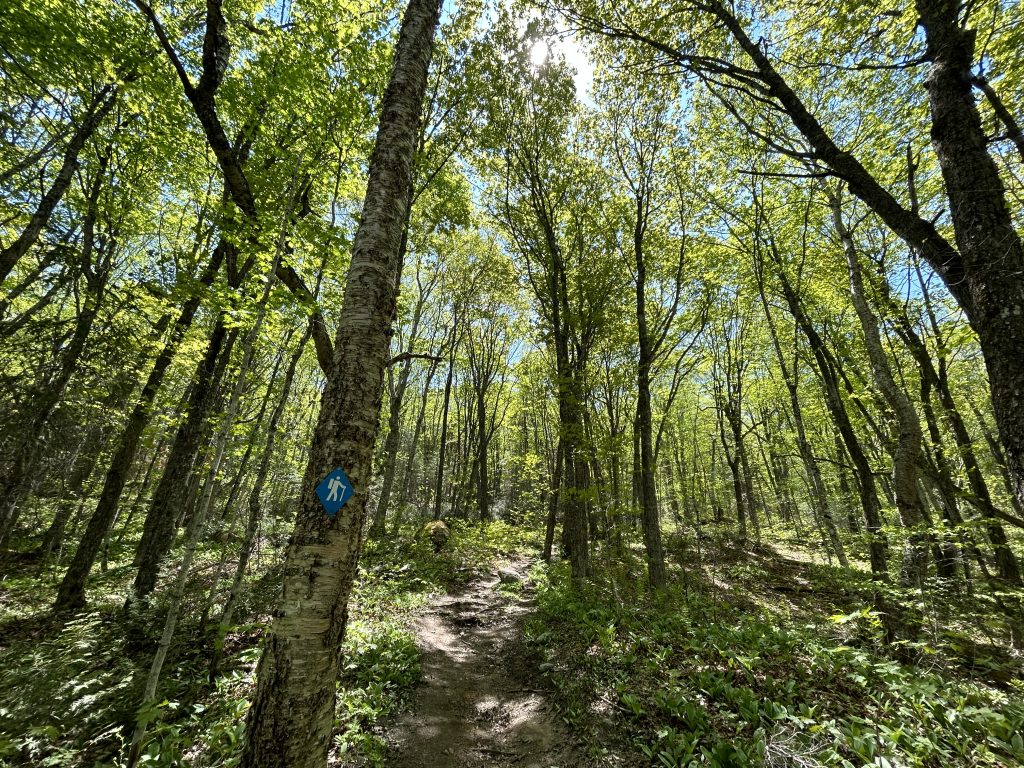
~
Want some help with trip planning?
Don’t hesitate to give us a call! Our knowledgeable and passionate staff will be happy to help you plan your visit to make the most of the wonders of spring at Lake Superior!
Park Office (open year-round): 705-856-2284
Visitor Centre (open May to mid-October): 705-882-2026.
